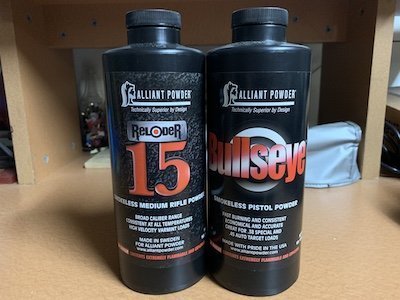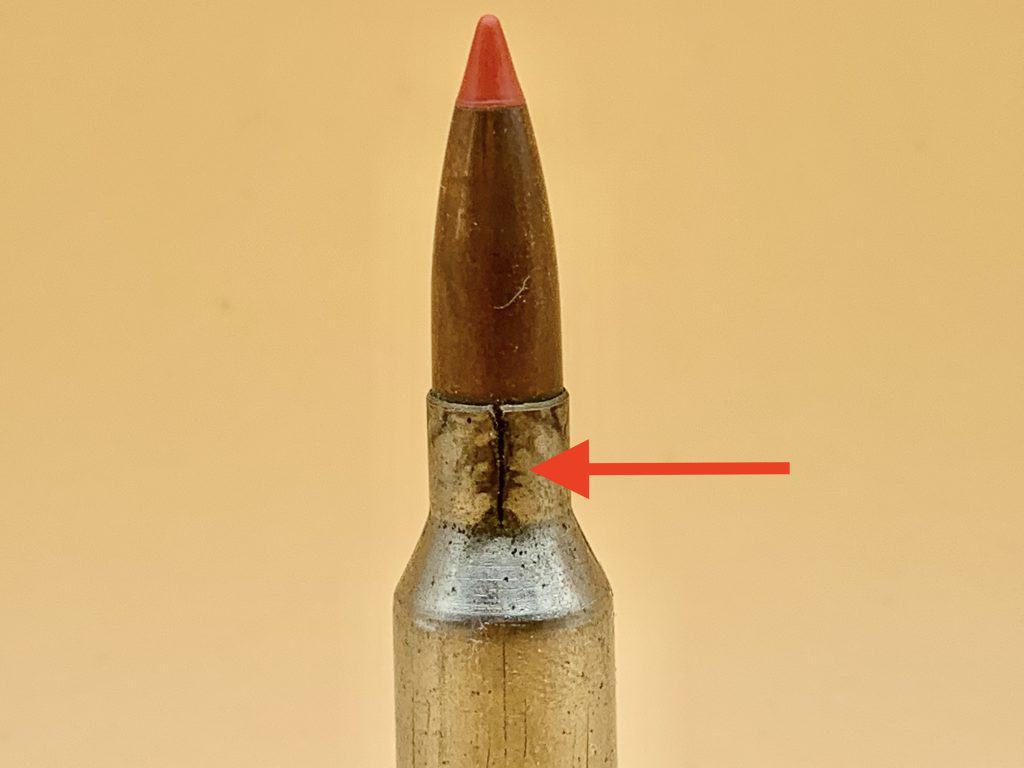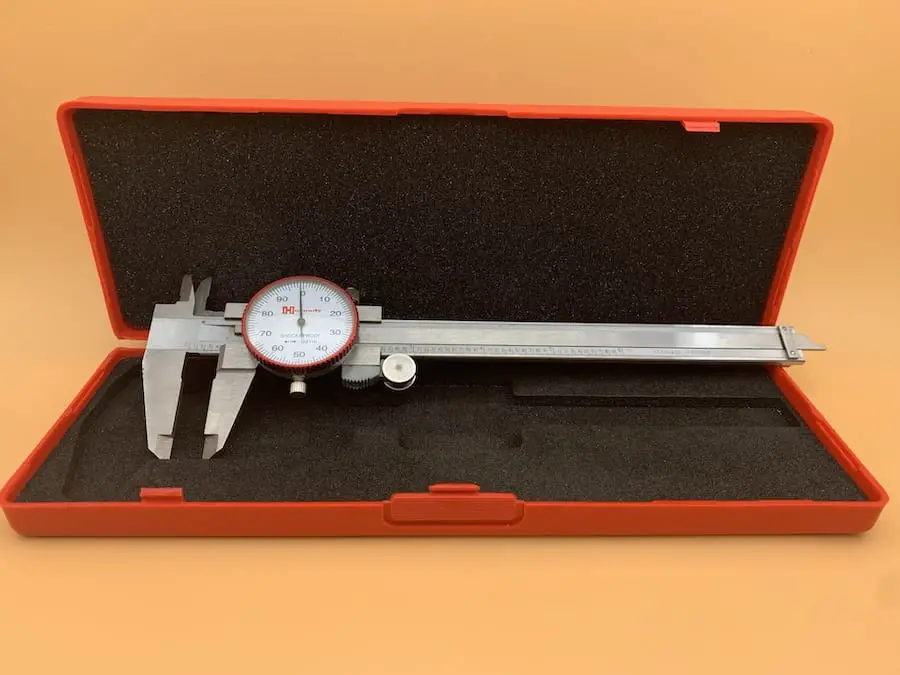Reloading ammo can be a safe and enjoyable hobby. One of the things that can help make it safer is to understand the most dangerous reloading mistakes that you can make and how to avoid them.
The most dangerous reloading mistakes that you can make are:
- Using the wrong gunpowder
- Double charging a case
- Failing to add powder to a case (a squib load)
- Not inspecting your brass
- Improper seating depth
The mistakes listed above are the ones most likely to cause an injury or damage a firearm. Fortunately, these mistakes are easy to avoid as long as you understand the basics of reloading and pay attention to what you are doing. This article will explain what each of these mistakes is, what causes them, and how to avoid them.
Using the Wrong Gunpowder
Using the wrong type of gunpowder is one of the most dangerous reloading mistakes that you can make. Doing so can, in some cases, cause the firearm to blow up in your hands.
The first type of powder-related mistake that reloaders make involves confusing traditional black powder and modern smokeless powder. They are not interchangeable and using the wrong one could be extremely dangerous.
Related: Is Reloading Ammo Safe or Dangerous?
Black powder has been around for many centuries and is considered an explosive. It has been used as gunpowder for muskets and cannons and has even been used in fireworks and bombs.
The most common use for black powder among shooters today is in muzzle-loading rifles. They remain popular since some states have regulations that provide for extended hunting seasons when using muzzle loaders.
Smokeless powder, on the other hand, has only been around for the past 100 years or so and is a propellant. It burns much cleaner than black powder and is less volatile.
Even though it is less volatile, smokeless powder is more powerful than traditional black powder. Using smokeless powder in a firearm designed for black powder is extremely dangerous and should never be attempted.
A reloader could also make a dangerous mistake by using the wrong type of smokeless powder. There are several companies that produce smokeless powder and each of them produce dozens of different types.

Each one of these types of smokeless powder have their own uses. Some are for use in handguns, others are for reloading shotgun shells, and others are meant for rifle cartridges.
The reason why each smokeless powder has its own uses has to do with how fast they burn. As a general rule, the smaller the cartridge, the faster the powder’s burn rate should be. Conversely, larger cartridges require a powder with a slower burn rate.
For example, Bullseye is a smokeless powder that is designed for handgun cartridges, such as .38 Special and .45 ACP. It is also one of the fastest burning smokeless powders that you can buy.
Using Bullseye in a large rifle cartridge, such as 7mm Remington Magnum could be a fatal mistake. Having that much fast-burning powder in a 7 Mag case would create more pressure than the receiver could handle. The result would likely be an explosion that would destroy the rifle as well as your face and arms.
How to Avoid Using the Wrong Gunpowder
Because there are so many different types of powder it is important for everyone that reloads their own ammunition to have multiple reloading manuals. They will show you which powders are safe and appropriate to use with the caliber and bullets you are reloading as well as how much powder to use.
As an extra measure of safety, I store my gunpowder away from my reloading bench. I only take one powder to the bench at a time and leave the canister out where I can see it.
This does two things: First, it makes it far less likely that I will accidentally grab the wrong powder. Second, it allows me to visually check to make sure I am using the correct powder any time that I wish.
Double Charging a Case
Having a double charge is another one of the most dangerous reloading mistakes that you can make. A double charge occurs when you fill a case with powder twice. The resulting situation can destroy a firearm and cause severe injury or even death.
Double charges occur most frequently when reloading pistol calibers. Pistol calibers require far less gunpowder than rifle calibers. In addition, some pistol calibers, such as 38 Special, have a lot of leftover space after they are charged with powder. This makes it very easy to accidentally add a second charge without realizing it.
There are a few different ways that you can reduce or virtually eliminate your chances of having a double charge. The first is to use a gunpowder that fills as much of the case as possible. For example, when I reload .223, the gunpowder that I use (RL-22) fills the case almost to the neck. A double charge is impossible in this situation since charging the case twice would result in powder spilling outside of the case.
Another way that you can reduce your chance of having a double charge is to seat the bullet on the case immediately after you charge it with powder. This helps prevent you from charging the case and accidentally picking it up again and adding a second charge.
The last way that you can prevent double charges is to know your loads. It is a given that your powder charges should be measured on a properly-calibrated scale. However, you should have a good idea what a properly charged case should look like after you get your loads established.
Does this load fill the case halfway full? Two thirds? Close to the neck? A quick visual inspection before you seat a bullet could save you a lot of trouble.
Not Charging a Case with Powder (Squib Load)
On the other side of things, having too little powder or none at all is another one of the most dangerous reloading mistakes that you can make. This can result in a bullet getting stuck in the barrel, which is also known as a squib load.
What makes a squib load possible is the primer. While the primer’s main function is to ignite the gunpowder it also has enough power to send a bullet at least partway down a firearm’s barrel.
There are some signs that a squib load has occurred. These include a quieter sound, less recoil, or even a malfunction in semi-automatic firearms. However, many shooters don’t realize that a squib load has occurred and continue firing.
When the next round is fired, that bullet collides with the one that is stuck in the barrel. This can result in either the barrel getting bulged or splitting like a peeled banana.
A split barrel can severely injure the person handling the firearm and even others standing nearby. Jagged metal and pieces of the splintered stock could jettison from the firearm and collide with flesh.
The ways that you can reduce your chances of experiencing a squib load are similar to those used to prevent double charges.
First, looking into your cases before you seat a bullet onto them will let you know if you failed to put powder into a case.
You can also prevent squib loads by seating a bullet onto the case as soon as you charge it with powder. This will reduce the chances of one slipping by.
Not Inspecting Your Brass
Not inspecting your brass prior to reloading is another one of the most dangerous reloading mistakes that you can make. While many problems could arise from this, the most dangerous is called incipient case head separation.
What is Incipient Case Head Separation?
Incipient case head separation means that a brass case has degraded to the point that the case head will separate from the rest of the case the next time a powder charge is ignited inside of it.
This is mainly a problem with rifle cartridges and is due to the resizing process. Here’s what happens:
Brass cases expand inside of the firearm’s chamber when they are fired. This is due to the miniature explosion that takes place when the primer and powder are ignited.
When a case is full-length sized, the sizing die returns the case to its original dimensions from side to side and sets its shoulder back to the proper position.
As a result of this sizing process, the case becomes slightly longer. (This is why you need to trim cases after they are used a couple of times.) This is similar to squeezing a ball of play doh or clay in your hand. It shrinks from side to side but the excess will come out the top and bottom of your hand.
When this stretching occurs the metal slightly above the case head becomes thinner. Over time, it can become so thin that it will split when it is fired.
The tell-tale sign of incipient case head separation is a bright ring a few fractions of an inch above the case’s rim. This indicates that the metal there has become very thin.
How to Check for Incipient Case Head Separation
If you are unsure that you have a case like this you can use a small paper clip to make sure. Straighten enough of the paper clip so that it will go all the way into the bottom of the case.
Then, create a 90-degree bend at the end of the paper clip. You can use this as a probe to scrape the inside of the case. If the paper clip feels like it has caught on something, the metal has likely thinned to a dangerous point at that location. Crush the case with some vise grips and throw it away.
Other Problems to Look for In Brass Cases
Incipient case head separation isn’t the only problem that you should check for when inspecting your brass prior to reloading. Other potential issues are listed below. You should throw away any case that has any of the following:
Split case neck
A brass case’s neck can split at the top. This happens most often in straight-walled pistol brass while expanding the case. However, it does happen sometimes in bottleneck rifle cases as well.

Other Visual Damage
In addition to split case necks, be on the lookout for other visual damage to the case. This can include cracks elsewhere on the brass, large dents or bends, and heavy corrosion.
Note: Some small dents can be fixed by inserting the case into a resizing die. If the case comes out looking normal then it is probably fine.
Loose primer pocket
Sometimes overpressure loads can result in a primer pocket expanding. When this occurs, the primer will not fit into the primer pocket as tightly as it should. A symptom of this problem is that the primer goes into the primer pocket way too easily and may even fall back out.
Improper Seating Depth
Another one of the most dangerous reloading mistakes that you can make is not seating the bullet to the proper depth. The reason for this is that excessively high pressures can result.
What is interesting is that pressure can increase both when a bullet is seated too far into the case and too far out. Seating a bullet too far into the case increases pressure because the powder has less space to burn within the case. This is most common when reloading handgun calibers, especially 9mm Luger.

Conversely, cartridges can reach excessive pressure levels when the bullet is seated too far outside of the case. The reason for this is the immediate resistance the bullet faces from the lands of the rifling as it begins moving. This is most common among precision rifle shooters trying to achieve the best accuracy possible.
Berger bullets provides a more in-depth explanation of how seating depth effects pressure on their website. You can find it by clicking here.
Fortunately, this mistake, like most other reloading mistakes is pretty easy to avoid. All reloading manuals list proper cartridge overall lengths. Having reloading data for the specific bullet that you will be reloading will also give you a better idea of the proper seating depth to use. For example, I load a lot of Hornady bullets, so I bought their reloading manual.
Note: Seating depth and a cartridge’s overall length go hand in hand. If your overall length is in-spec, then that means that your bullet has been seat to the proper depth.
